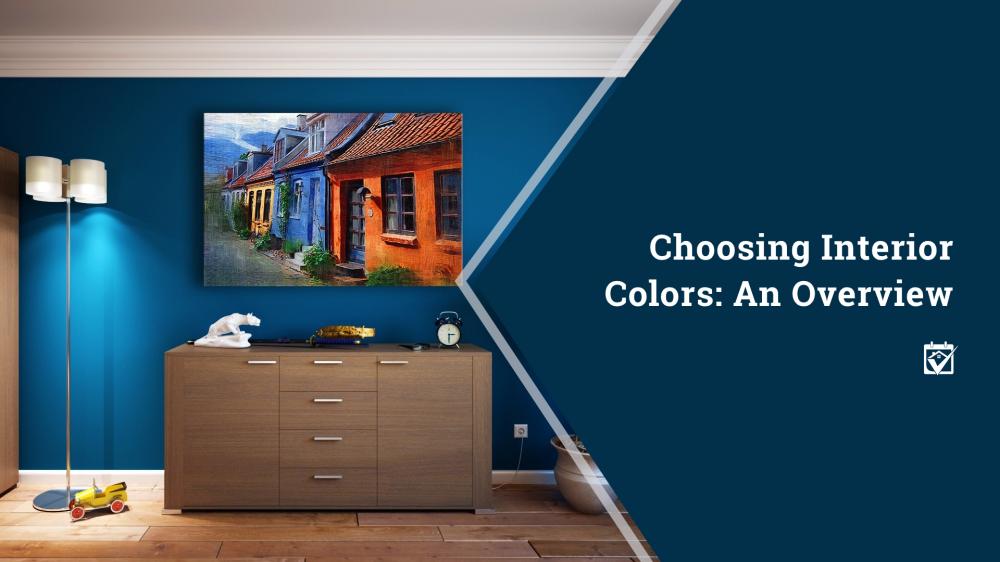
A home is supposed to be a sanctuary, a place where you escape the chaos of everyday life. But sometimes those sacred spaces get pretty chaotic almost on their own. Maybe it’s clutter that’s overtaking your space, or maybe it’s something far worse: interior colors that fail to harmonize. Repainting can be a big job, but if you go in with a plan you can create the home you’ve always wanted.
The Key? Think Globally for Interior Colors
It can be very tempting to think of your home as a series of rooms, each wholly independent of one another. The truth is something different, though. Houses are actually a series of rooms that work together to create an overall atmosphere (plus, you know, a place to give you shelter and to store your stuff). When you consider how your rooms actually work together, you can choose colors that are far more likely to play well together room by room.
Start with the obvious: the rooms that are literally connected to one another. Unless you have a teenager, the chances are high that the doors will stay open long enough for you to be able to spy one room as you’re going through another. And, of course, you may have rooms that are literally part of one larger space, such as a living/dining combo.
Before you even walk into a paint shop or start looking at samples online, take the time to map out how each room interacts with the next. For example, a living/dining combo are two spaces that work independently, but also together. You’ll definitely want to consider each when you’re choosing colors, even if those colors aren’t exactly the same. For example, you may want to paint your living area a light blue and your dining area a light gray. Carefully chosen colors can harmonize together.
Rooms Behind Walls
What about the not so obvious rooms in your home, such as the guest bedrooms, the bathrooms or the utility room? Can they act independently since there’s a transition?
Yes, but mostly no.
As you move through one space, say, that calm living/dining combo we painted in the section above, you want to maintain a similar feel in the next space. So if your kitchen sits behind the dining area, rather than painting orange, for example, look for a color that harmonizes with the grays and blues. After all, you’re going to see the colors of that kitchen from your dining room.
It may seem kind of silly to worry about clashing colors that literally only overlap through a doorway, but those interior colors are more than just colors. Those colors are attitudes, they’re sensations, they’re hints at how rooms are meant to be used and what kind of overall atmosphere you want your home to convey. When going through a room transition makes it feel like you’ve stepped into a whole different house, you need to address the biggest design element there: the paint.
Although contrasting colors have their places and certainly can work in transitional spaces, you want to maintain coordinated colors between rooms. To make that more clear, your first goal is to choose the palette, and therefore atmosphere, that your whole home should convey. That might be pastels or jewel tones or earth tones, or whatever works for you, as long as it’s consistent. Your second goal is to apply those colors in a way that maintains the emotional effect you have in mind.
Going back to that kitchen, since our living room and dining were light gray and blue, you might consider a light blue-gray, a light green, or even a light yellow, depending on the palette you’re working with.
Colors are Moods, Choose Wisely
Sherwin-Williams has been predicting popular color palettes for years. They’re a great place to start looking for your new “it” colors. Other paint companies will also offer palettes among their paint chips, giving you a lot of pre-designed options if you’re not sure you can handle the job alone.
If you are in the market to buy or sell a home, contact Michelle Lohman, Associate Broker at Realty One Group.
Michelle Lohman, Associate Broker
Realty One Group

All content provided on this blog is for informational purposes only. The owner of this blog makes no representations as to the accuracy or completeness of any information on this site or found by following any link on this site. The owner will not be liable for any errors or omissions in this information nor for the availability of this information. The owner will not be liable for any losses, injuries, or damages from the display or use of this information.

Leave a Reply
You must be logged in to post a comment.